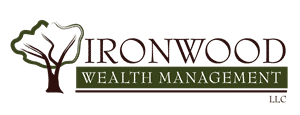For Small Businesses: The Ins and Outs of Safe Harbor 401(k) Plans
Instituting an employer-sponsored retirement plan at your small business seems (almost) like a no-brainer. But what type of plan should you establish? Here’s a look at the safe harbor 401(k).
Providing a vehicle for your employees to save for their retirement is a great perk, but that doesn’t mean it’s without hurdles and administrative considerations for your small business. In fact, deciding you’re going to establish a 401(k) plan is one of those instances when you realize you don’t know how much you don’t know.
For instance, you may have learned during the process that the IRS likes to check in on businesses offering traditional 401(k) plans to ensure they’re compliant with certain requirements. One of these requirements is that businesses must pass a series of annual nondiscrimination tests aimed at determining whether or not a plan is equitable to all employees.
While these tests are designed to confirm that every employee — not just highly compensated ones — benefit from a company’s 401(k) plan, flunking the tests means costly corrective actions and could also require you to refund contributions.
What are the nondiscrimination (also known as annual compliance) tests? There are three:
- The Actual Deferral Percentage (ADP) test is a measure of how much income your top earners contribute to their 401(k)s compared to lower earners.
- The Actual Contribution Percentage (ACP) test compares employer contributions to the 401(k)s of your highly compensated employees with your other employees.
- The Top-Heavy test investigates the value of assets in the 401(k) accounts of “key employees” compared with all held assets in the plan. Businesses with 60% or more of plan assets allocated to key employees are considered top heavy.
Getting a “Pass” With a Safe Harbor 401(k)
There is a way to avoid these tests and to ensure compliance. It’s called a safe harbor 401(k). How can you know if a safe harbor plan may be right for your business? For starters, if you’ve failed nondiscrimination or compliance tests in the past, a safe harbor plan can provide a pass for the future, because it is designed with built-in compliance.
Even if you haven’t failed the tests, or you haven’t yet established a 401(k) plan at your business, safe harbor is worth considering if you:
- Intend to match employee contributions
- Don’t want to mess with the nondiscrimination tests
- Are eager to invest in your employees
- Would like to reduce your taxable income (as with any eligible employer contribution)
Here are the ins and outs of a safe harbor 401(k) retirement plan.
Requirements
The main requirement is that you as the employer must make contributions to your employees’ 401(k) accounts via an employer match (either basic matching or enhanced matching) or nonelective contribution.
The contribution you determine is a fixed, mandatory contribution and is required to be immediately 100% vested.
- Basic match: Your company matches 100% of all employee contributions up to 3% of deferred compensation, in addition to a 50% match of the next 2% of deferred compensation.
- Enhanced match: This is when you as the employer match at least 100% of all employee contributions up to 4% but not in excess of 6% of compensation.
- Nonelective contribution: This takes employer contributions even further. The company will contribute at least 3% of every employee’s compensation, even those who don’t make contributions.
In addition to matching contributions, there are strict deadlines you must meet, as well. In your initial year of the plan, it must be at least three months long, and that requires that you begin establishing your safe harbor 401(k) in mid-summer at the earliest. Talk to your plan provider to understand the various deadlines.
It is possible to amend an existing traditional 401(k) so that it includes a safe harbor matching provision.
Any shift to a safe harbor plan or the institution of a new safe harbor plan requires a 30-day advance notice to employees.
Safe Harbor Contribution Limits
These are the same as those in a traditional 401(k) plan: $19,500 ($26,000 for individuals age 50 and older) in 2021.
Safe harbor provisions also let business owners and highly compensated employees max out
deferrals.
Are you ready to start an employee-sponsored retirement plan at your small business, or are you interested in including a safe harbor provision in your existing 401(k)? We offer a number of small business planning services, so contact us today.
